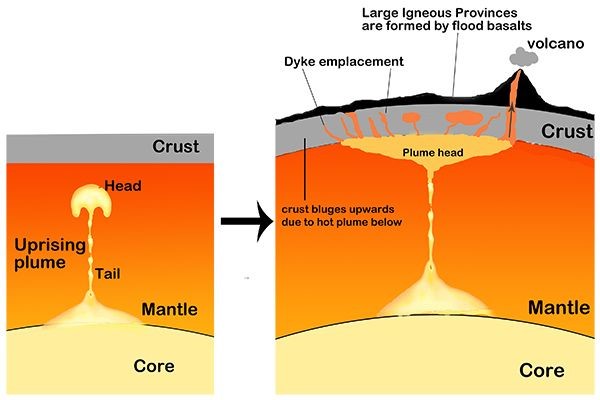Define mantle Plume’s role in Plate Tectonics?

Mantle plume is an upwelling of abnormally hot rock within the earth's mantle which carries heat upward in narrow, rising columns, driven by heat exchange across the core-mantle boundary. Eventually, the rising column of hot rock reaches the base of the lithosphere, where it spreads out, forming a mushroom-shaped cap to the plume. Heat transferred from the plume raises the temperature in the lower lithosphere to above melting point, and forms magma chambers that feed volcanoes at the surface. It is a secondary way through which earth loses heat. In 1971, geophysicist W. Jason Morgan developed the hypothesis of mantle plumes.
- Mantle plumes transport primordial mantle material from below the zone of active convection; produce time-progressive volcanic chains; break up continents; and act as a driving force for plate tectonics.
- The narrow conduits of deep-mantle material rise through the solid mantle before spreading out laterally in the upper asthenosphere. From there, they cause the lithosphere to swell and shear as the heat from the plume increases the temperature of lower lithosphere.
- Mantle plumes are also thought to be the cause of volcanic centers known as hotspots and probably have also caused flood basalts.
As the plume remains anchored at the core-mantle boundary and it does not shift position over time, a string of volcanoes is created when the lithospheric plate moves above it. The formation of the Hawaiian Island and Emperor Seamount chain in the middle of the Pacific Plate are caused by mantle plume.